- The Science Fair Award for Addiction Science
- Choosing an Addiction Science Project
- Resources to Stimulate Ideas for Your Science Fair Project
- Addiction Science Award Teacher's Guide
2019
- Press Release
-
A 14-year-old’s innovative approach to prevent tampering and misuse of opioid pills won a first place Addiction Science Award at the 2019 Intel International Science and Engineering Fair (ISEF)—the world’s largest science competition for high school students. See Press Release
- First Place: Aditya Tummala
-

Project: Tampr-X: A Novel Technology to Combat Prescription Opioid Abuse
Aditya, recognizing the need for an improved tamper-proof opioid pill to reduce the potential for misuse, developed a gummy-like substance he calls Tampr-X that could not be crushed or melted for snorting or injecting.
- Second Place: Sid Thakker
-

Project: The Role of ALPHA5 Single Nucleotide Polymorphism on Nicotine Dependence
Using an in vitro model, Sid manipulated and edited the gene expression of the ALPHA5 nicotinic receptor, which has been linked to nicotine addiction.
Where Are They Now?
High School: James Madison High School, Senior Year
- Third Place: Nikita Rohila
-
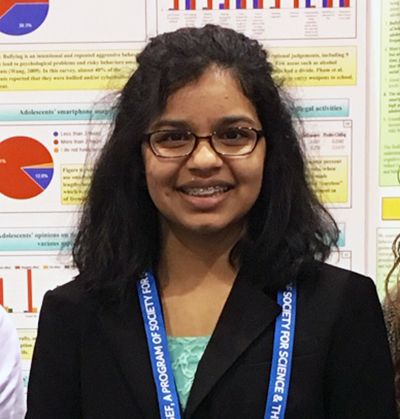
Project: Trends and Factors for Risky Behaviors Among Adolescents
Nikita created a survey she sent out to nearly 100 teens which revealed three significant contributing factors to risky behaviors: unhealthy amounts of smartphone and social media use, sleep deprivation, and bullying victimization.
Where Are They Now?
High School: Stuttgart High School, Junior Year
- Honorable Mentions
-
- Nikhiya Shamsher QuitPuff: A Point of Care Diagnostic for Early Risk Detection of Oral Pre-Cancer and Cancer in Chronic Smokers
- Tinotenda Zimhunga and Rufaro Mutogo Alcohol Sensors
- Zakwan Khan, Investigating the Role of the Cat-2 Gene in Substance Dependence
2018
- Press Release
-
A project that identified and tested a bioinformatics program that can help identify underreported suicides linked to drug overdoses was awarded the first-place distinction at the 2018 Intel International Science and Engineering Fair (ISEF)—the world’s largest science competition for high school students. See Press Release
- First Place: Mia Yu and Daphne Liu
-
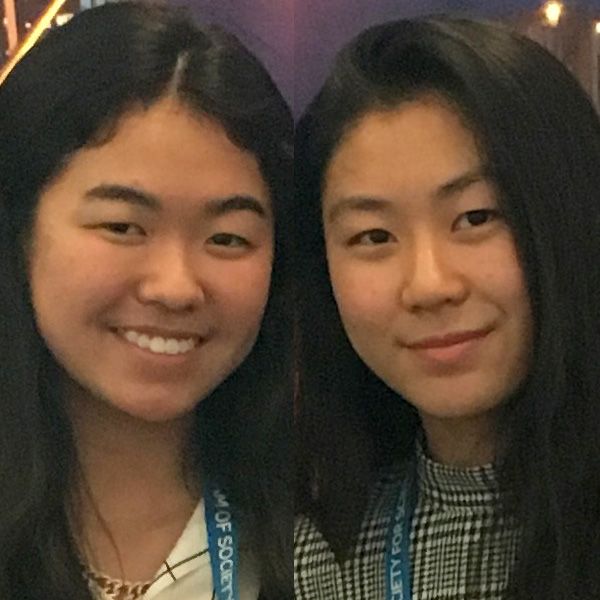
Project: Undetected Suicide: Classification of Undetermined Drug-Related Deaths Using Machine Learning Techniques
Mia and Daphne compared three machine learning models to determine how well they could identify undetermined overdose deaths as actual suicides. Using data from their home state of Utah, the machine learning technique determined that drug-related suicide deaths were underreported by 34 percent.
- Second Place: Rohan Arora, Venkat Krishnan, and Anil Tolwani
-
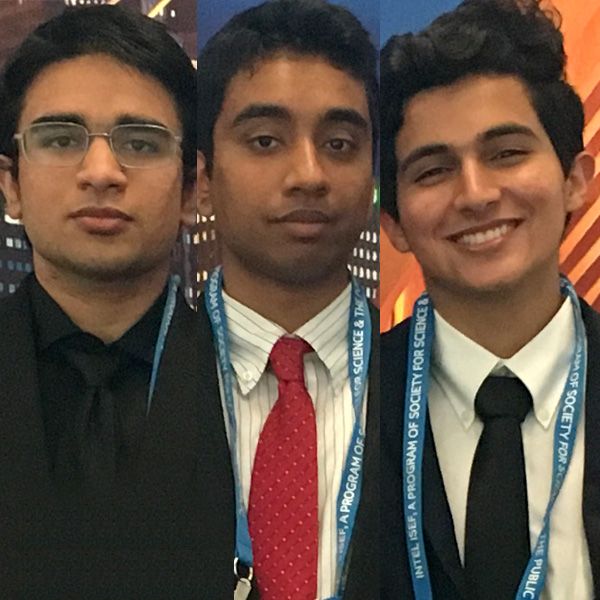
Project: LabTrak: A Micro-Telemetry Device for Modeling Mice Behavior
Rohan, Venkat and Anil developed a well-tested and lightweight non-invasive tool to measure mouse movements during the preclinical phase of medication development. The tool, designed to send data straight to a computer or cell phone, is sensitive enough to determine the difference between running, scratching, turning or head movements.
- Third Place: Saadh Ahmed
-

Project: Development of a Drug-Likeness Rule for Natural Products
Saadh analyzed a database that contains drug-like natural compounds, and evaluated them for patterns and commonalities. Using qualitative and quantitative screening techniques, he developed streamlined measures for identifying multiple natural compounds that could be worthy of study for specific health conditions.
- Honorable Mentions
-
- Emily Garcia, What Influences Safe Medication Practices: Investigating the Relationship Between Parent’s Intentions, Self-Efficacy and Knowledge
- Ha Khoa Le and Phuong Nam Nguyen, The Study of Concentration of Urine Neurotransmitters of Dopaminergic and Serotonergic System and the Relationship to Behavioral Disorders in Patients with Online Gaming Addiction
- Ishaan Maitra, A Quantifiable Method to Detect and Monitor ADHD: The Use of Facial and Motion-Based Behavioral Cues Analysis Using Deep Neural Network and RGBD Data
- Sindhuja Uppuluri, A Novel Approach to Substance Abuse Rehabilitation Using Transient Receptor Potential Channels and Insulin Signaling in C Elegans
2017
- Press Release
-
A project applying the science of epigenetics to demonstrate the health dangers of hookah smoke won a first-place Addiction Science Award at the 2017 Intel International Science and Engineering Fair (ISEF)—the world’s largest science competition for high school students. See Press Release
- First Place: Anusha Zaman
-

Project: Epigenetic and Biotransformation Effects of Hookah Smoke Extract on Human Oral Keratinocytes
Anusha analyzed the effect of wet and dry hookah smoke extracts on epithelial cells inside the mouth. Her findings suggest that hookah smoke produces adverse health effects similar to those of cigarette smoke.
- Second Place: Nkima Stephenson
-
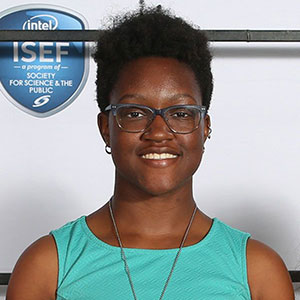
Project: Data Analysis of the Epigenetics of Drugs and Alcohol
Nkima compared two data sets containing genes directly related to alcohol exposure to sets containing genes modified by environmental influences and related to alcohol exposure. She identified genetic and environmental factors that could signify a predisposition to addiction.
- Third Place: Kashfia Nehrin Rahman
-
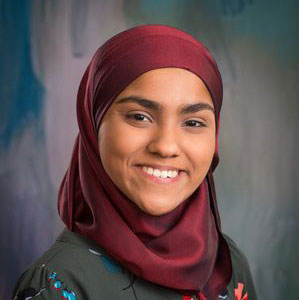
Project: The Dynamics of Habituation: A Neural Study of the Effects of Repeated Exposures to Risky Behaviors on Cognitive Control and Emotional Responses in the Adolescent Brain
Kashfia concluded through her research that repeated risky exposures can desensitize associated negative responses, explaining why teens take risks when they know a behavior is dangerous.
UPDATE (February 2019): Kashfia recently gave a TED Talk about her research and experience as a three-time award winner of the NIDA Addiction Science Award.

Where Are They Now?
Undergraduate School: Harvard University
- Major: Neuroscience and Public Health Policy
"My experience receiving the Addiction Science Awards by Friends of NIDA truly inspired me to study the mind, the brain, and behavior. Additionally, the wonderful opportunity of presenting my research at NIH/NIDA, visiting different labs, and interacting with wonderful and brilliant scientists, I was able to determine how important it is to improve mental health, especially in the period of adolescence, to maintain a healthy society." — Kashfia Nehrin Rahman
- Honorable Mentions
-
- Anuj Gupta, Do Parents Really Know Best? Investigating the Relationship between Perceived Parental Goals and Academic Factors
- Dilge Kocabas and Dilara Alev Ortel, Illegal Substance Biodetectives: Apta-Liposomes
- Caleb Martonfi, And the Winner Is…Developing a Computer Program to Investigate Neural Competition with Multimodal Stimuli
2016
- Press Release
-
A project showing how negative attitudes about stress impact key factors that influence vulnerability to addiction, including sleep, emotion and cognition, won a first place Addiction Science Award at the 2016 Intel International Science and Engineering Fair (ISEF)—the world’s largest science competition for high school students. See Press Release
- First Place: Kashfia Nehrin Rahman
-

Project: Making the Mind Matter: Stress Mindset Effects on Sleep Quality, Stress Response, Emotion and Cognition in the Developing Adolescent Brain and the Role of the Prefrontal-Amygdala Circuit
Kashfia found a direct correlation between a teen’s negative outlook on stress and a negative physical stress response that adversely impacts sleep quality, emotion and cognition.
UPDATE (February 2019): Kashfia recently gave a TED Talk about her research and experience as a three-time award winner of the NIDA Addiction Science Award.

Where Are They Now?
Undergraduate School: Harvard University
- Major: Neuroscience and Public Health Policy
"My experience receiving the Addiction Science Awards by Friends of NIDA truly inspired me to study the mind, the brain, and behavior. Additionally, the wonderful opportunity of presenting my research at NIH/NIDA, visiting different labs, and interacting with wonderful and brilliant scientists, I was able to determine how important it is to improve mental health, especially in the period of adolescence, to maintain a healthy society." — Kashfia Nehrin Rahman
- Second Place: Lindsay Poulos
-
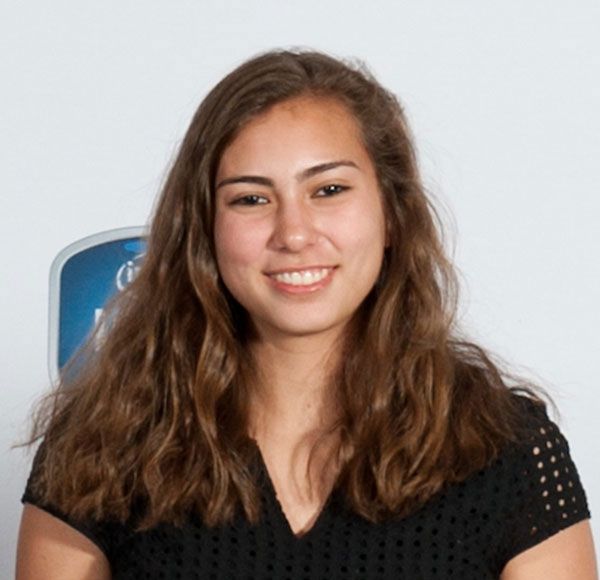
Project: The Effects of E-Cigarette Vapor on Drosophila Melanogaster
Lindsay explored whether e-cigarettes might be a healthier alternative to traditional cigarettes and found that fruit flies exposed to e-cigarette vapor showed evidence of gene mutations.
- Third Place: Rachel Mashal
-
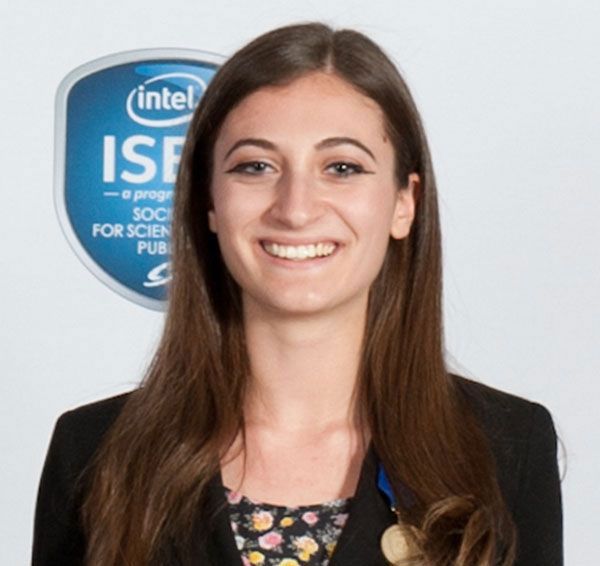
Project: Development of a Caffeine Addiction Paradigm to Examine How Dietary Restriction and Level of TOR Signaling Modulate the Effects of Drugs
Rachel found that dietary changes protected adult fruit flies from the negative effects of caffeine. She also found that male fruit flies are more vulnerable to some negative effects of caffeine during development and into adulthood.
2015
- Press Release
-
A project identifying novel compounds that could be used for pain relief was awarded a first place Addiction Science Award at the 2015 Intel International Science and Engineering Fair (ISEF)—the world’s largest science competition for high school students. See Press Release
- First Place: Glenn Yu
-

Project: Naturalistic Painkillers: Design, Synthesis and Biological Evaluation of Novel Fatty Acid Binding Protein Inhibitors
Glenn used computational modeling, chemical synthesis of analogs, and biological testing to identify and theoretically build a more effective and safer pain reliever.
- Second Place: Ralph Lawton
-
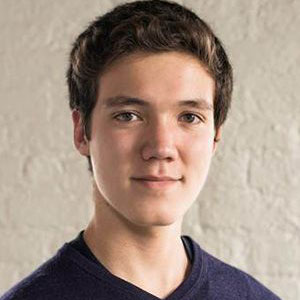
Project: Don’t Be Led Ashtray: Toxicological Effects of Electronic Cigarettes on Inflammation and Lung Cell Viability with Comparison by Brand, Flavor and Generation
Ralph looked at the toxicological effects of e-cigarette vapor on lung cell viability and inflammation. His project suggests that tobacco vapor can be just as damaging to lung cells as traditional cigarette smoke.
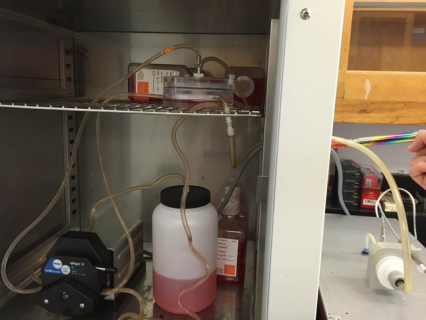
Where Are They Now?
Undergraduate School: Duke University, Robertson Scholars Program
- Major: Economics
- Minor: Global Health
Job: Edgecombe County Health Office, Summer 2017
- Responsible for doing public health work on opiates in rural North Carolina.
"After receiving the award in 2015, I then went to the Roswell Park Cancer Institute in Buffalo, NY to expand my work another year, which I presented again at ISEF in 2016. The award helped to reinforce in my mind my interests in medicine, medical research, and the intersection of that with public health." — Ralph Lawton
- Third Place: Kashfia Nehrin Rahman
-

Project: Nomophobia: Effects of Smartphone Dependence and Separation on Stress, Anxiety, Memory and Cognition in the Developing Adolescent Brain
Kashfia found direct correlation between stress and the temporary loss of a cell phone, which she called “nomophobia” for “No More Mobile Phone.”
UPDATE (February 2019): Kashfia recently gave a TED Talk about her research and experience as a three-time award winner of the NIDA Addiction Science Award.

Where Are They Now?
Undergraduate School: Harvard University
- Major: Neuroscience and Public Health Policy
- Honorable Mentions
-
- Lucas Lopes Cendes, Improving the Efficiency of Genome Variants Detection by the Parallelization of its Computer Process
- Ajitha Mallidi, A Novel Animal Model to Replicate Alcohol-Seeking Behavior in Humans
2014
- Press Release
-
An exploration of third-hand nicotine exposure from e-cigarettes was given the top Addiction Science Award at the 2014 Intel International Science and Engineering Fair (ISEF)—the world’s largest science competition for high school students. See Press Release
- First Place: Lily Wei Lee
-
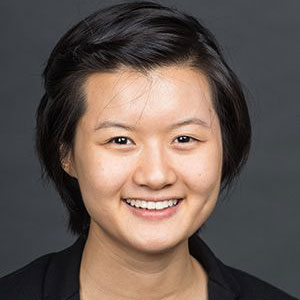
Project: Assessment of Third Hand Exposure to Nicotine from Electronic Cigarettes
Lily examined whether e-cigarette use could pose a risk of third hand exposure, where nicotine from vapors sticks to surfaces to affect non-users even if they aren’t exposed to the e-cigarette use.
Where Are They Now?
Undergraduate School: Brooklyn College, BA/MD program
- Major: Chemistry and Children & Youth Studies
- Minor: Health & Nutrition Sciences/Public Health
Graduate School: SUNY Downstate Medical School, anticipated graduation 2022
"Receiving the Addiction Science Award definitely validated continuing my research endeavors. My research was published in a peer-reviewed journal, which has opened the doors to the tobacco research community. Currently, my career goals are still hazy, but I definitely want to continue my research as I pursue medicine." — Lily Wei Lee
- Second Place: Aakash Jain
-

Project: Computational Analysis of the GABA(A) Receptor
Aakash used computational and statistical techniques to provide insight into the three-dimensional structure of the GABA(A) receptor, believed to be involved in conditions such as depression, schizophrenia, and addiction.
- Third Place: Alexandra Ulmer and Sarayu Caulfield
-
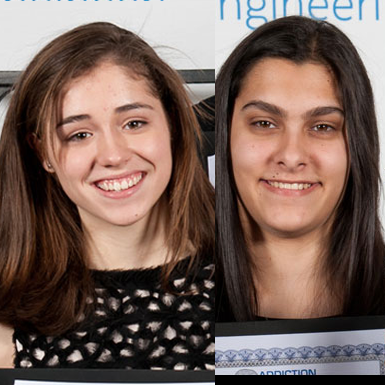
Project: Capacity Limits of Working Memory: The Impact of Multitasking on Cognitive Control and Emotion Recognition in the Adolescent Mind
The pair explored whether experience with multitasking affected behaviors controlled by the prefrontal cortex, an area involved in self-control.
2013
- Press Release
-
An exploration of electronic “screen time” and sleep on mood, memory and learning was given the top Addiction Science Award at the 2013 Intel International Science and Engineering Fair (ISEF)—the world’s largest science competition for high school students. See Press Release
- First Place: Zarin Ibnat Rahman
-
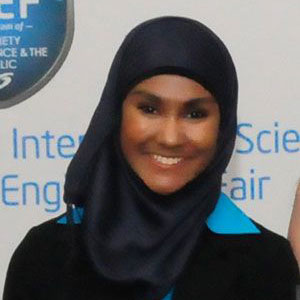
Project: The At-Risk Maturing Brain: Effects of Stress Paradigms on Mood, Memory and Cognition in Adolescents and the Role of the Prefrontal Cortex
Zarin hypothesized that excessive screen time with computers, phones and other electronic devices serves as a stressor ultimately affecting mood, academic performance and poor decision making.
Where Are They Now?
Undergraduate School: Harvard University
- Major: Neurobiology
- Minor: Psychology, Pre-medical Track
Graduate School: Hopes to go to medical school.
"My experience receiving the Addiction Science Award truly inspired me in completing research on the mind, the brain, and behavior. The opportunity of presenting my research at NIH/NIDA and interacting with the wonderful and brilliant scientists, I was able to determine that neuroscientific research is something that I absolutely love and that it is something that I would like in my future career. I plan to take one gap year prior to medical school to focus on research or other related fields." — Zarin Ibnat Rahman
- Second Place: Emory Morris Payne and Zohaib Majaz Moonis
-

Project: The Effect of Ethanol on Beta Cell Development in Zebrafish
After exposing Zebrafish embryos to increasing concentrations of ethanol (a pure form of alcohol), the team observed the health and function of pancreatic beta cells, which are needed to produce insulin.

Where Are They Now?
Emory Morris Payne
Undergraduate School: Middlebury College in Middlebury, Vermont
Graduate School: Applying to Grad School for a PhD in chemistry
Job: Works as a Lab assistant
Zohaib Majaz Moonis
Undergraduate School: New York University
- Major: Mathematics
- Minor: Music and Economic Theory
Graduate School: Applying for Masters in Financial Engineering
"My award from NIDA gave my research experience more validity and allowed me to get into other schools and labs. Having the experience of presenting at the NIDA at the NIH helped give me more confident in presenting. I felt motivated to continue pursuing a research career." — Emory Payne
"I'm no longer working in biology, but people are always happy to see I have worked in an original research project." — Zohaib Majaz Moonis
- Third Place: Alaina Nicole Sonksen
-
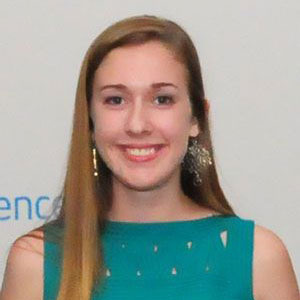
Project: Determining the Behavioral and Physiological Effects of Pentedrone-Based Bath Salts on Drosophila Melangaster
Alaina looked at the effects of two versions of the drugs called “bath salts” on the common fruit fly and found that substances acted more like a hallucinogen than a stimulant, with the flies appearing to be in a daze.
- Honorable Mention
-
Gili Rusak, Properties of Twitter Network Communications Among Teenagers
2012
- Press Release
-
A project that maps dopamine circuits in the prefrontal cortex through optogenetic manipulation was given top honors in this year’s annual Addiction Science Awards at the 2012 Intel International Science and Engineering Fair (ISEF)—the world's largest science competition for high school students. See Press Release
- First Place: John Edward Solder
-
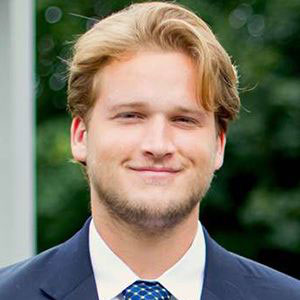
Project: Optogenetic Interrogation of Prefrontal Cortex Dopamine D1 Receptor-Containing Neurons as a Technique to Restore Timing: A Novel Approach to Treat Prefrontal Disorders
John was able to control behavioral timing in mice that were genetically modified to activate dopamine neurons in the prefrontal cortex, a region involved in functions such as impulsivity and self-control, in response to a light stimulus.
Where Are They Now?
Undergraduate School: Yale University
- Cognitive Science, Thesis: Cognition and Histamine: H1 Receptor Modulation of Prefrontal Cortex From Fungi in the Amazon to Working Memory Function in the Rat Brain
Job: Research Assistant, Yale University
"After ISEF, I went on to graduate from Yale in 2016 with a Bachelors of Science degree in Cognitive Science. My experiences through NIDA and ISEF proved invaluable as I continued performing research in neurobiology and psychopharmacology. This culminated in my thesis titled: Cognition and Histamine: H1 Receptor Modulation of Prefrontal Cortex From Fungi in the Amazon to Working Memory Function in the Rat Brain." — John Edward Solder
- Second Place: Benjamin Jake Kornick
-
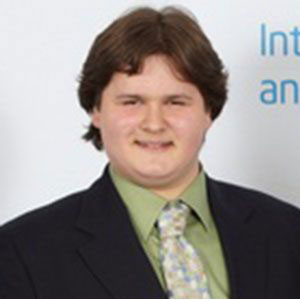
Project: OMG: Look Who Joined Facebook! The Relationship between Parenting and Adolescent Risk Behaviors
Benjamin conducted a 74-item survey of more than 130 teens to construct a novel model of the complex relationships between parental knowledge and their children’s undesirable or risky behaviors.
- Third Place: L. Elisabeth Burton
-

Project: A Big Fat Deal, Phase III: Attributions of Body Talk, Risk Assessments of Steroid/Dietary Supplement Use, Perceptions of Media Images, and Self-Esteem
Elisabeth conducted a survey of nearly 200 teenagers to determine how their internal self image and self esteem affected eating disorders, steroid use and potentially dangerous use of dietary supplements.
Where Are They Now?
Undergraduate School: University of New Mexico
Graduate School: University of New Mexico College of Nursing
Job: Summer 2017 in Egypt working at a medical clinic for the poor
"Your award helped encourage and support me and my research! This support and encouragement pushed me to continue doing research. I am currently working with the Deputy Director of the Clinical Translation Science Center of UNM's Hospital on my research. He is working with me to get it published as 1st author. I know as a Nurse Practitioner and when I'm all over the world, I will be doing research as well." — L. Elisabeth Burton
2011
- Press Release
-
A project using cutting edge computer modeling to identify potential new medications for nicotine addiction won first place distinction at the annual Addiction Science Awards at this year's Intel International Science and Engineering Fair (ISEF) --- the world's largest science competition for high school students. See Press Release
- First Place: Sarah Susie Pak
-

Project: Would You Do It for the Kids? Factors Involved in the Prediction of Intergenerational Preferences
Sarah’s project identified generosity and patience as two key interacting factors that increase the likelihood that a person will make altruistic decisions that will primarily help future generations.
- Second Place: Darby Kathryn Schumacher
-
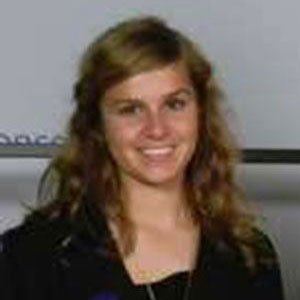
Project: Making Heartbeats Go LOKO
Darby investigated the effects of the alcoholic caffeinated beverage on the heart rate of the water flea. Her findings support the notion that caffeine in alcoholic energy drinks could mask some of alcohol's behavioral effects.
- Third Place: Yamini T. Naidu
-

Project: From Models to Medications: Identification of Medication Leads for Treating Methamphetamine Addiction
Using molecular modeling software that incorporated eye-catching 3D structural illustrations and vivid computer animations, Naidu discovered two potential sites in the methamphetamine binding TAA receptor.
Where Are They Now?
Undergraduate School: Yale University, 2017
- Ethics, Politics, and Economics
Job: Oregon Health and Science University
2010
- Press Release
-
A project using cutting edge computer modeling to identify potential new medications for nicotine addiction won first place distinction at the annual Addiction Science Awards at this year's Intel International Science and Engineering Fair (ISEF) --- the world's largest science competition for high school students. See Press Release
- First Place: Ameya Ashish Deshmukh
-

Project: Rational Drug Design Methods for the Identification of a Novel Negative Allosteric Modulator of a4b2 Nicotinic Receptors
Ameya used “rational drug design” to select candidate molecules based on previous research, narrow the list using molecular models, and finally, test these on human cells to identify which compounds show promise for treating nicotine addiction.
- Second Place: Kevin Michael Knight
-

Project: Improving ADHD Treatment: A Comparison of Stimulant Medication Treatment for Children with ADHD, Computerized Cognitive Training of Attention and Working Memory, and the Combination of the Two
Kevin examined whether it is possible to use specialized computer programs to re-train the brains of students with ADHD, either as an alternative or as a complement to the stimulant medications typically prescribed to treat ADHD.
- Third Place: Joseph Hunter Yagoda
-
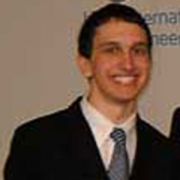
Project: Risky Business: What Cognitive Factors Influence Risk-Taking in the Academic Setting?
Using an innovative simulation mimicking a prototypical classroom, Joseph measured his subjects' perceptions of the risks of skipping class.
Where Are They Now?
Undergraduate School: Yale University
- Ethics, Politics, and Economics
Job: Senior Business Analyst, global management consulting firm
2009
- Press Release
-
A resourceful study into the effect of third-hand smoke upon the risk for genetic mutations in fruit flies won the top Addiction Science Award at this year's Intel International Science and Engineering Fair (ISEF), the world's largest science competition for high school students. See Press Release
- First Place: Sehar Anjum Salman and Jada Nicole Dalley
-

Project: A Cytogenic Analysis of Genetic Mutation Induced by Cigarette Smoke in Drosophila Melanogaster
Sehar and Jada measured the frequency of observable genetic mutations among Drosophila melanogaster (fruit flies) that were exposed as larvae to a piece of foam previously saturated with tobacco smoke.
Where Are They Now?
Sehar Anjum Salman
Undergraduate School: University of Southern California
- Major: Health and Humanity
Gradudate School: Mississippi College
- MS, Medical Science.
Medical School: Texas A&M School of Medicine
Jada Nicole Dalley
Undergraduate School: Elon University in North Carolina.
- Major: International Business, International Studies, and Marketing
- Minors: Religion, Sales, Economics, and Asian Studies
Job: Staff at a tour company for middle school and high school students who wish to travel abroad.
- Second Place: Daniel Jeffrey Martin
-
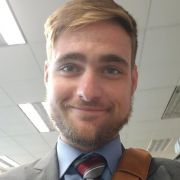
Project: The Effect of Human Methamphetamine Usage on Carnivore Scavenging
Daniel made a retrospective analysis of data from a local medical examiner's office to demonstrate that carnivorous animals do not like to scavenge the remains of humans known to have abused methamphetamine.
Where Are They Now?
Undergraduate School: Pomona College
- B.A., Late-Antique Medieval Studies
Gradudate School: University of California, Berkeley, School of Law
- J.D. 2017.
- Third Place: Lucia Mocz
-

Project: Complex Evaluation of Danger and Tranquility in Urban Settings: An Immunocomputing Intelligence Approach
Lucia used an artificial intelligence algorithm to generate highly detailed maps with correlated indicators of danger and tranquility in the urban region of her home town.
2008
- Press Release
-
This year, for the first time, three students will receive awards for exemplary projects in Addiction Science at the Intel International Science and Engineering Fair (ISEF), the world's largest science competition for high school students. See Press Release
- First Place: Kapil Vishveshwar Ramachandran
-

Project: The Novel Role of the GluClα; Ion Channel and Diazepam Binding Genes in Alcohol Addiction
Kapil determined that when a specific protein is deleted in fruit flies, the flies may lose their tolerance to alcohol, offering a strong indication that the protein may play a role in addiction.
Where Are They Now?
2019: After completing his PhD, Kapil now runs his own neurobiology lab at Harvard as an independent Harvard Junior Fellow.
Graduate School: Ph.D., Johns Hopkins
- Biological Chemistry and Neuroscience
Undergraduate School: Duke University
- Studied the intersection of ion channels and developmental biology.
- Second Place: Ethan Garrett Guinn
-

Project: Video Games: The Next Generation's Addiction
Ethan developed a survey about gaming behavior similar to those used to assess whether drug users are addicted, and found that 69 % of boys and 44 % of girls showed borderline-to-severe signs of video game addiction.
Where Are They Now?
Undergraduate School: University of Oklahoma
- Major: Management of Information Systems
Graduate School: Oklahoma State University
- M.S., Data Science and Analytics
- Third Place: Shelby Marie Raye
-

Project: What's In and What's Out: High Schoolers' Perceptions of Coolness
Shelby identified unique parameters that affect life trajectories, and may help scientists better understand peer pressure, a common force in initiation of substance abuse.

